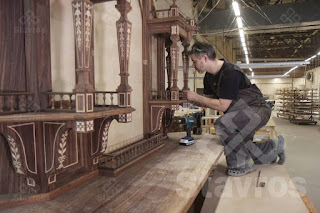http://www.alexanderpalace.org/palace/pallisander.html
http://nicholsonadvisory.com/the-mauve-boudoir
https://thealexanderpalace.fandom.com/wiki/The_Palisander_Drawing_Room
https://tsarnicholas.org/2019/03/09/furniture-for-interiors-of-the-alexander-palace-to-be-recreated/
https://www.spb.kp.ru/daily/27046/4111992/
https://cinema.rin.ru/novosti/100187/Komnaty_Nikolaja_II_i_Aleksandry_Fedorovny_v_Aleksandrovskom_dvorce_otkrojut_dlja_posetitelej_v_2020_go.html
https://tsarnicholas.org/2019/09/26/new-photos-reveal-progress-of-the-reconstruction-of-historic-interiors-in-the-alexander-palace/
https://tsarselo.ru/yenciklopedija-carskogo-sela/adresa/aleksandrovskii-dvorec-palisandrovaja-gostinaja.html
https://vk.com/stavros_spb
https://kdflora.tumblr.com/post/187329815063/there-is-some-reconstruction-happening-at-the
https://romanovs.tumblr.com/post/530242814
http://geglov2.narod.ru/Foto/Aleks_p/Aleks_p_f_002_04.htm
https://institutspb.ru/articles/tekuschaya-restavraciya-aleksandrovskogo-dvorca
Before the Maple Room was built in 1902-1903, the Pallisander Room, or the Rosewood Drawing Room (pallisander is another name for rosewood), or the Darmstadt Memories Room, was the primary sitting room in the Alexander Palace. Its name in Russian is Палисандровая гостиная. In his early diaries, Nicholas called this room the green Chippendale room, because the wooden corner fireplace, with its cornices and shelves, was seen as a Chippendale piece. Nicholas and Alexandra liked this room best, and during their first years in the palace it was their favourite cozy spot to spend time alone together. They often had tea and meals in this room, and they also liked to show it to intimate guests and visitors to whom they wanted to show special favour, and they also showed the room to their most trusted friends.
The Pallisander Room was fourth in line of Her Imperial Majesty's Private Apartments and could be entered three ways. One pocket double-door could be entered from the ground floor corridor, and the other two entrances were on either side of the room. These were the double doors of the Mauve Boudoir, and another set of double doors to the Maple Drawing Room.
The room was given an English-style interior with the use of high wood wainscotting and contrasting textures in the materials used to decorate it. Meltzer took the old English Arts and Crafts aesthetic and blended it with the then new and popular Art Nouveau style, best seen in the proportions of the furniture.
The walls were hung with straw-green or lemongrass coloured Réseda silk, and the floor was covered with a diamond-patterned, plum-coloured, wall-to-wall British carpet, with the fireplace, wall paneling, doors and wooden furniture carved in rosewood by Meltzer in the Sheraton style. In the center of the ceiling hung a large gilt-bronze and crystal chandelier in the Empire style.
Nicholas and Alexandra personally chose the paintings that hung in the room, and they wanted the selections to reflect their personal tastes. The two large paintings on either side of the fireplace were new paintings that Alexandra had purchased specifically for this room. The one on the left was The Annunciation, painted in the Art Nouveau style, and the one on the right was Madonna and Child by Paul Thumann. Alexandra also bought a portrait of her father, the late Grand Duke Louis IV of Hesse, painted posthumously by Plueskowe in 1894, and a portrait of her mother, the late Grand Duchess Alice of Hesse (born Princess Alice of Great Britain and Ireland), a copy painted by Kobervein. The largest painting in the room was a canvas of Romrod Castle in Hesse. There were also works by famous Russian artists and a watercolour by the English painter Sir Edward Poynter, which Nicholas had purchased during a visit to Great Britain.
On the screen in front of the fireplace were watercolours of Alexandra's childhood homes in Hesse. The fireplace had a glass screen in front of it, and on its shelves were pieces of Danish porcelain from the Royal Copenhagen Factory, which is still in operation today. In the center of the mantle was a clock in the Art Nouveau style with pieces by Gallé and Russian art glass on either side.
Alexandra kept a "memory chest" in the right corner of the room that she had filled with her children's baby clothes and toys as well as her own baby things and mementos from and letters she wrote to her grandmother Queen Victoria, who died in 1901. Amongst these were Alexandra's diaries and love letters that Nicholas had written to her during their courtship.
There were also other pieces in the room made by the Fabergé, such as a silver and pallisander wood chest in the Art Nouveau style, which Alexandra loved.
The room was equipped with two telephones, one to the outside and the other was a special phone with direct link to the Winter Palace. This phone was used during the revolution when Alexandra was alone in the Alexander Palace with her sick children, and she used it to keep in touch with General Ressin, the commandant at the Winter Palace.
Photos taken in the Pallisander Room:
The Pallisander Room itself:
Painting of the Palisander Room:
Autochromes of the Pallisander Room:
(Above photo courtesy of Laura Mabee.)
In the 1990s, after the fall of the Soviet Union, the Alexander Palace became a museum once again, but due to inadequate funding, most of the interiors could not be accurately reconstructed, although the staff tried their best. But despite their best efforts, the Pallisander Room had mock furniture and some of the original paintings and art pieces on the walls and tables to at least recreate the atmosphere of the room.
The reconstruction of the Pallisander Room and its furniture, etc.:
(above photos courtesy of Stavros official page on VK)
(above photos courtesy of kdflora on Tumblr.)
(photos courtesy of institutspb.ru)
(above photo courtesy of 66salomon1986 on Instagram via Paul Gilbert's Tsar Nicholas blog.)
(above photo courtesy of Komsomolskaya Pravda)
(above photo courtesy of Kinoteka)

































































No comments:
Post a Comment